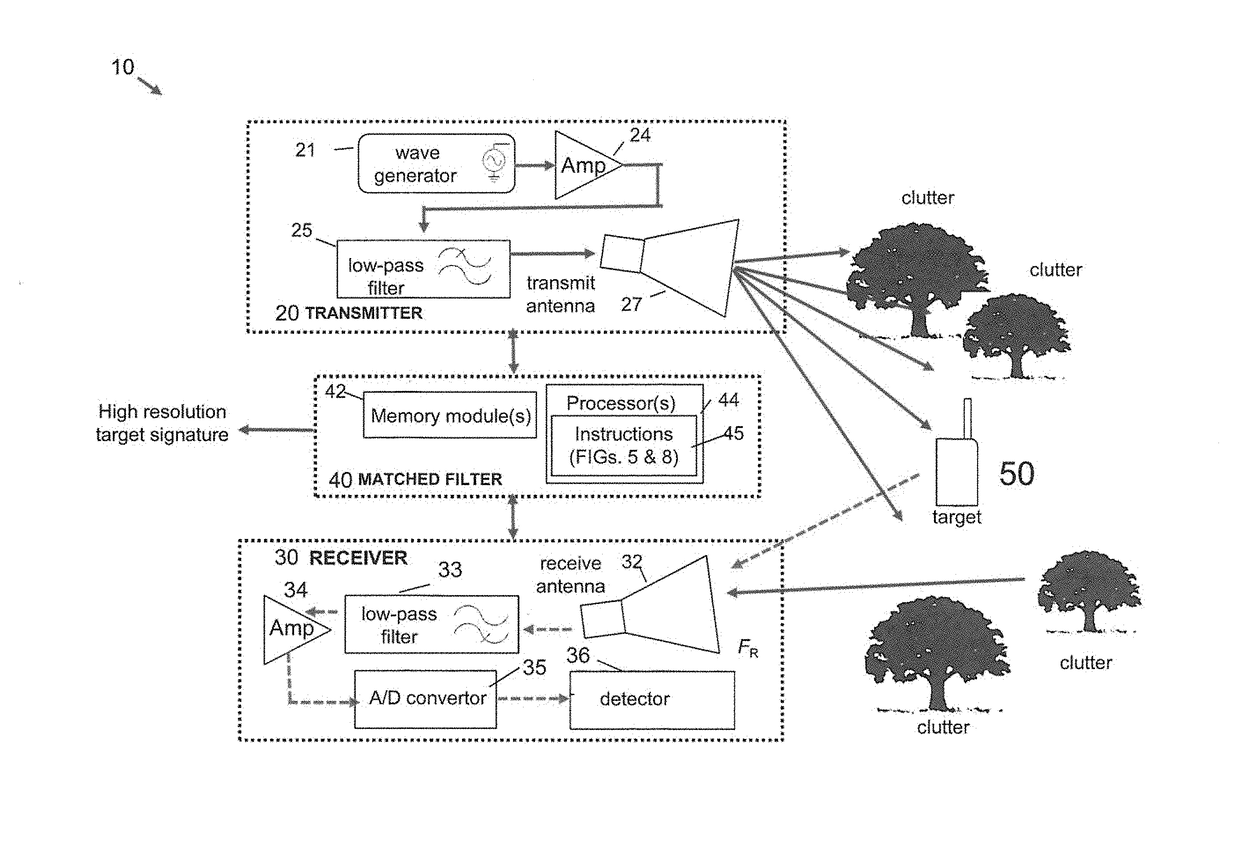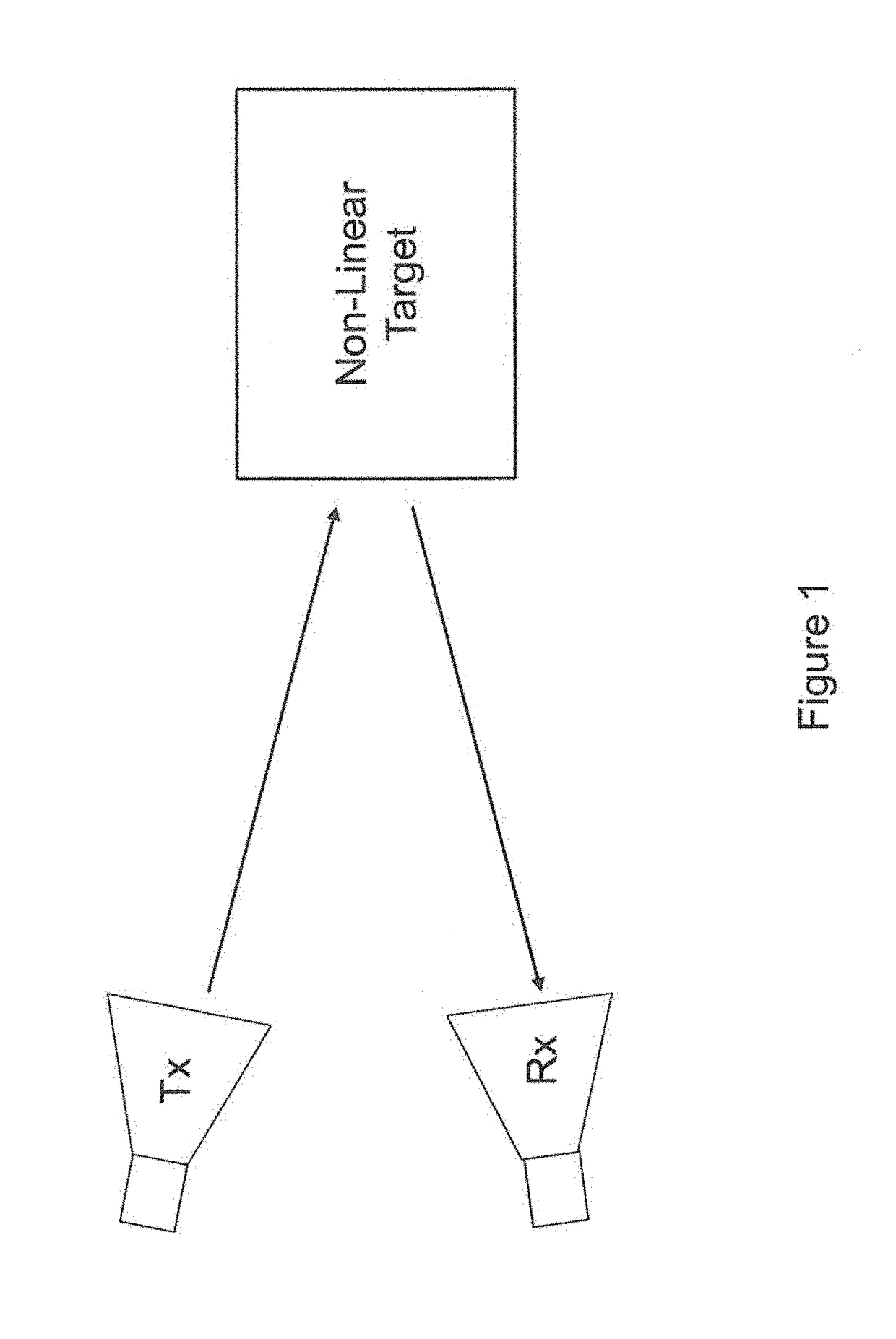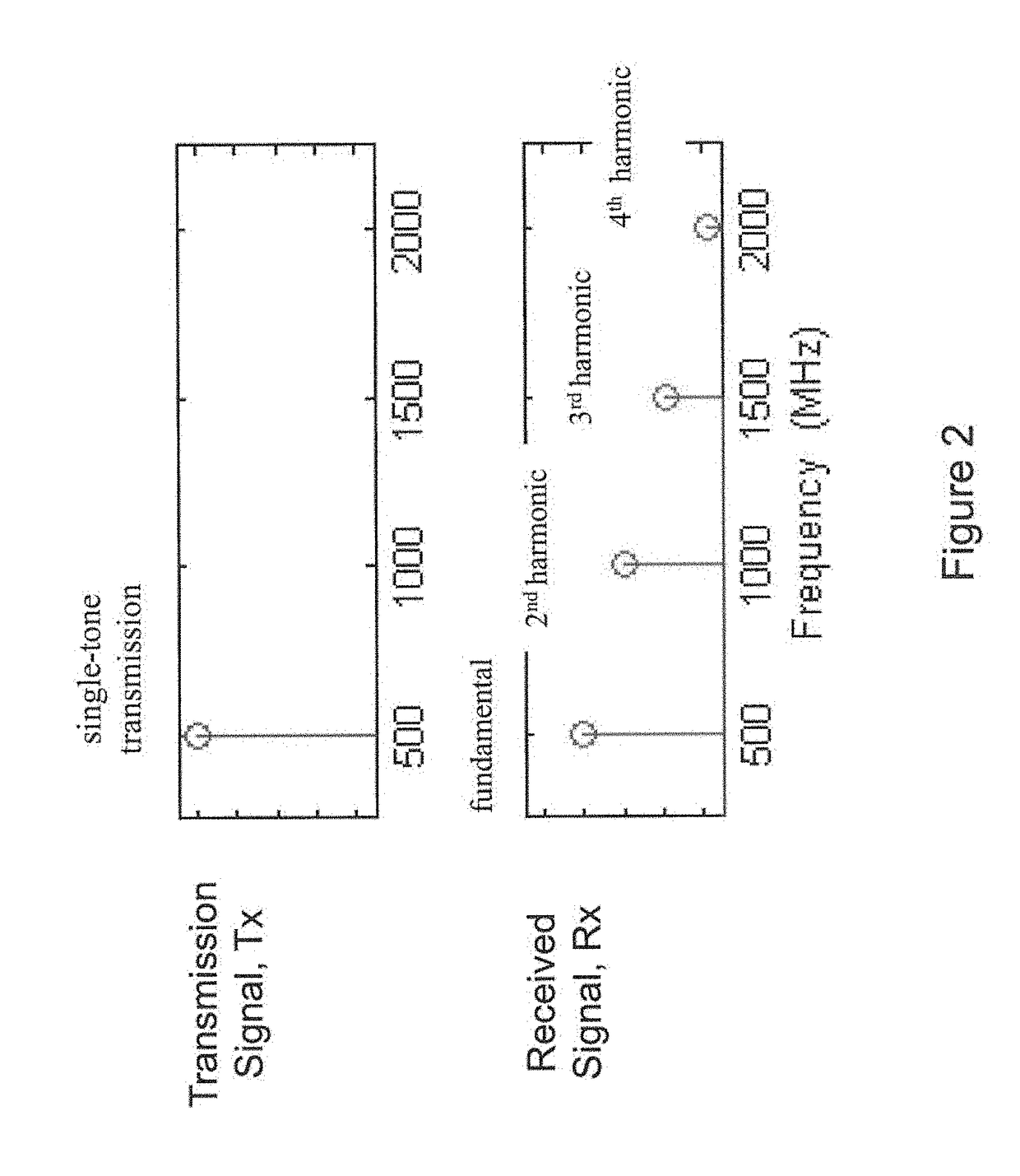Methods and systems for locating targets using non linear radar with a matched filter which uses exponential value of the transmit signal
a non-linear radar and transmit signal technology, applied in the field of radar, can solve the problems of difficult radar operators to distinguish them from targets of interest, large linear responses of certain clutter objects, and difficulty in detecting small targets, so as to reduce the sidelobe level of the matched filtered received signal
- Summary
- Abstract
- Description
- Claims
- Application Information
AI Technical Summary
Benefits of technology
Problems solved by technology
Method used
Image
Examples
Embodiment Construction
[0029]Embodiments of the present invention provide improved non-linear detection and ranging capabilities. It has been demonstrated that certain objects produce non-linear responses to radar probe signals. Nonlinear radar produces frequencies in a nonlinear target (e.g., electronics or metal object) response that are different from those transmitted by the radar, thereby separating natural clutter from the nonlinear target response. In particular, echoes can be observed at one or more harmonics of the transmitted frequencies. Thus, the processing described herein does not focus on the entire transmit waveform, which contains multiple discrete signal tones, but instead it focuses on its harmonic(s)-of-interest.
[0030]The novel methodology detects and processes harmonic target responses to a transmitted radar waveform, and in this way, it is able to localize the target in range. FIG. 1 shows a simple schematic of a non-linear radar scenario. A radar transmitter Tx emits a radar signal ...
PUM
 Login to View More
Login to View More Abstract
Description
Claims
Application Information
 Login to View More
Login to View More - R&D
- Intellectual Property
- Life Sciences
- Materials
- Tech Scout
- Unparalleled Data Quality
- Higher Quality Content
- 60% Fewer Hallucinations
Browse by: Latest US Patents, China's latest patents, Technical Efficacy Thesaurus, Application Domain, Technology Topic, Popular Technical Reports.
© 2025 PatSnap. All rights reserved.Legal|Privacy policy|Modern Slavery Act Transparency Statement|Sitemap|About US| Contact US: help@patsnap.com



